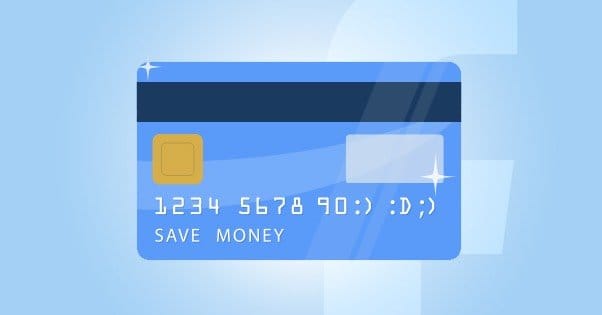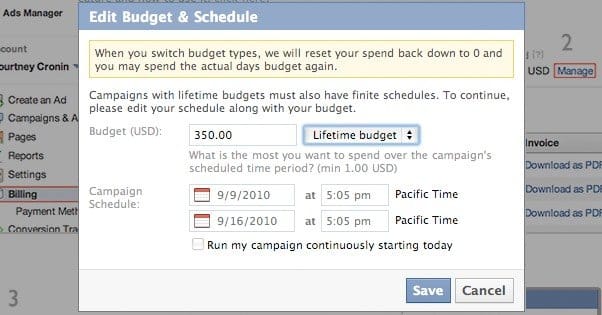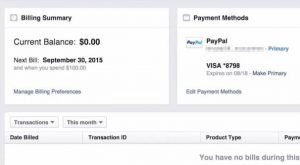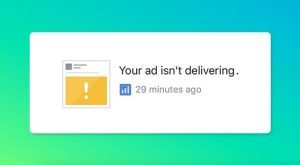 Written by ContentPowered.com
Written by ContentPowered.com
There are a lot of various ad budget terms thrown about with Facebook ads, and they all make sense. The problem is, if you’re new to Facebook marketing or you’re just confused about all the redundant terminology, it can be hard to keep it all straight. I’ll try to draw back the curtain a little and educate you about budgets with Facebook ads.
When you set yourself up to run Facebook ads, you’ll be creating an ad campaign with an ad set and an ad within it. When you make these, and set your keywords and targeting options, you’ll be asked to set either a daily or a lifetime budget. Whichever you choose has to be higher than your minimum daily budget. It can exceed your account spending limit – a limit set by you elsewhere in the ads system – but Facebook will use the lower of the two when calculating spending.
What changes your minimum daily budget? A lot of factors have an impact on the system. For example, your spend type – CPC vs CPM vs OCPM vs CPA – will have a large effect. Your targeting matters as well; broader targeting often costs less, but is much less effective.
Note that only the admins in charge of the advertising account are capable of adjust any spending limits for any ads. If you’re using the Facebook Business Manager, those specifically set in the ad manager role may be able to change these values as well. However, overarching limits can still only be changed by admins.
What is Minimum Daily Budget
Facebook sets an absolute minimum daily budget for ads at $1. This is just a minimum for if your ad factors don’t calculate a higher cost for your ads. The actual minimum is a more complex rule; it’s twice the cost of your individual clicks. So, if you’re running CPC ads where the cost for a click is $1, your actual daily minimum budget is $2. If you’re running expensive, highly targeted ads with a CPC of $5, your actual minimum daily budget will be $10.
The $1 minimum kicks in if you have very cheap ads.
If, for example, you manage to run ads that have a 10 cent cost per click, your minimum daily budget will be $1, because the actual “twice your CPC” is 20 cents, which is still under $1.
This, of course, relies on your ads actually running. If you somehow restrict the visibility of your ads in such a way as to prevent anyone from actually seeing them, you won’t be charged $1 for those ads to exist. They have to run for you to be charged. You just can’t set a daily budget for under your minimum daily budget.
What is Account Spending Limit
An account spending limit is a hard and fast limit to the amount of money that can be spent by your ads. For example, if you set an account limit of $300, your ads in total can’t exceed $300. If you have 10 ads and all of them spend $30, you’ve hit your limit, and you have to raise that limit if you want your more effective ads to run more.
For this reason, the account spending limit should not be used to limit how ads are run. You have more direct, ad-level tools for that. The account spending limit is, instead, just a way to keep your ads from going out of control. I recommend calculating how much you anticipate spending – or how much your maximum budget could possibly be – and plugging that in as an account limit. Think of it as a way to keep from overdrafting a back account, rather than a way to keep ads from running beyond certain points.
Account spending limits are optional; if you’re not worried about going over budget, you don’t have to set one. You can change it at any time, as well, though you can’t set it to anything lower than 10% more than what you’ve already spent. For example, if you’ve spend $100, you can’t change or add an account spending limit of anything lower than $110.
Your account spending limit does not reset automatically. You have to go into the ads manager and reset it manually. If your ads aren’t running, but everything is on and you have money, check to see if you had an account spending limit set and that you reached that level.
Resetting your account spending limit just gives you another go at maxing it out. It’s a good thing to use if, for example, you have a monthly budget for ads. If you’re able to spend $1,000 per month, but no more, set that as your account spending limit. Your ads will cease when you reach that limit, which should ideally be at the end of the month. Then, on the 1st of the next month, you can reset it and have another month of $1,000 budget totals.
What is Daily Budget
In contrast to minimum ad spend and maximum account spend, the daily budget is an ad set level setting, rather than account-wide. You can tell specific ad sets to have a fixed budget. Facebook will do what it can to spend up to that amount, but will not spend beyond that amount. You could set one ad set to a daily budget of $50, and it will spend anywhere from $0 to $50 depending on how Facebook manages to run the ads.
The reason daily budget exists is to regulate ads so you don’t have to try to finagle targeting and account spend limits to limit them. If your account spend limit is $300, and you have three different ad sets each with a $50 daily budget, it will take two days of maximum spend — $50 times 3 sets times 2 days – to reach your account spend limit.
What is Lifetime Budget
Lifetime budget is a limit that, rather than applying for one day at a time and resetting each day, applies in total for an ad set. It’s an alternative to daily budget; only one can be set at a time.
For example, let’s say you have an ad set filled with Christmas ads set to run for the two months leading up to Christmas. You also have a fixed budget of $1,000 to use for those ads. You can set the lifetime budget to $1,000 for that ad set. This way, the date restrictions will keep your ads from running past Christmas, and your budget restriction will keep them from draining your ads account beyond what you can afford.
Facebook will do its best to spread out your budget, rather than front-loading it. They won’t rush to suck the $1,000 out of your account. Rather, out of two months – 60 days – Facebook will try to spread that $1,000 out. This comes to about $16 per day, so Facebook will treat your ads as if they have a “soft cap” of around $16 per day. If one day you only spend $10, the remaining $6 will be added to later days, to try to hit your $1,000 limit.
In this way, the lifetime budget is sort of a combination between a hard limit and a goal.
Which to Use: Daily or Lifetime Budgets
This is a question you will have to ask yourself for each ad set; do you want to use a daily budget or a lifetime budget?
I find that daily budgets tend to be best for regulating the amount of money you spend on highly effective ads. Essentially, if your ad would run out of control and spend hundreds of dollars on ineffective traffic, a daily budget is ideal. It will limit the amount you spend each day, but it will give you as much effective traffic each day as possible within that budget. Use this for particularly large audiences or broad targets. Likewise use it for testing ads.
Meanwhile, a lifetime budget is more ideal for ads that don’t have broad targets. In the two-month, $1,000 example above, you have a rough breakdown of $16 per day. If you set a daily budget of $16 for that ad, you’d have the same general lifetime budget, but you lack flexibility. If one day you only spend $10 on ads, the remaining $6 just disappears from your budget. If another day you would easily reach $32 worth of valuable customers, you can’t; the daily budget caps you at $16.
With lifetime budget, you have that flexibility.
What Are You Charged For
Every type of Facebook ad charges you for impressions. There’s no ad you can run for “free.” For example, you can’t run ads optimized for off-site conversions, but break the conversion process, so you’re never charged for conversions. This would be a dangerous loophole for Facebook to allow; the ads system would clog up with ads Facebook isn’t getting paid to run, and it would ruin the system for everyone.
Facebook lists ten different general objectives. These include items like “boost your posts” “get installs of your app” and “get people to claim your offer.” Each of these is optimized for a specific type of action, such as page likes, app installs, or offer claims. All of them charge you for impressions, while some will also charge you for the objective itself as well.
Why would you run an ad that charges you for both a conversion and an impression, when you could run ads that just charge you per impression?
Well, for one thing, the charges vary. An ad that charges you for conversions will likely have much lower impression costs, to make up for the higher charge of the conversion. For another thing, ads optimized for impression-based objectives don’t convert nearly as well as ads optimized for those conversions. You’ll end up spending – and wasting – money trying to game the system.
When Are You Charged?
Facebook has a bit of a complex system for determining when you’re charged for ads, and how much you’re charged for them. It’s all about the billing thresholds.
You have a billing threshold if you pay using payment methods like a debit card, credit card, or PayPal account. If you’re just using direct debit from a linked bank account, Facebook doesn’t have to worry as much about fraud, and thus doesn’t impose a billing threshold.
Regardless of whether you have a billing threshold or not, you will be charged at the end of the month for any outstanding balance. There’s no “run $24 in ads so you never reach a threshold and never have to pay” scam.
You can manually change your billing threshold. There are five levels at which it can be set; $25, $50, $250, $500, or $750.
The way the billing threshold works is that you are charged immediately upon reaching that accrued level of ad charges. If you run $30 worth of ads and your billing threshold is $25, you will be charged $25 when you reach that threshold, and the remaining $5 will stay unbilled until either you hit $50 or the end of the month ticks over.
Changing your billing threshold is easy; just go to your ads manager, click billing, click billing threshold, and click manage to make your changes.
Campaign Spending Limits
There’s another type of spending limit you can set, but it only applies if you’re using the Facebook Ads Power Editor, a plugin for Chrome. I recommend you use it regardless, but if you’re just getting into ads, it might be a bit daunting to use. This type of spending limit is, obviously enough given the subtitle, the campaign spending limit.
The campaign spending limit works the same way as a lifetime spending limit, only instead of applying at the ad set level, it applies at the ad campaign level. Or, to put it another way, it’s like the account spending limit, only it applies per campaign rather than per account. It’s a middle of the road limit.
Maximum Spend Limits
Facebook is an advertising powerhouse that caters both to small businesses with $1 a day budgets, and large corporations like Coca-Cola, with thousands of dollars to spend per hour if they wanted. As such, there’s no discernible maximum spend limit outside of those limits you set yourself. Facebook will happily keep taking your money and keep showing your ads for as long as possible.
Rest assured that if there is a limit, the kind of company capable of reaching that limit is not going to be reading this article. If you’re the kind of business reading this article, you pretty definitely don’t have the kind of budget necessary to make Facebook say “woah, hold on, don’t you think you’re going a little overboard here?”
Timing and Overlap
When you change an ad limit, such as changing from daily to lifetime, there will be a bit of overlap and some charges may be higher than either budget would indicate. For example, if you had a daily budget of $10 and you spend $5 of that, you’re halfway to your limit. If you change that day to a lifetime budget of $100 for the next five days, that would effectively set your flexible ad budget to $20 per day. Facebook can then go on to spend $20 on that ad today, ignoring your previous investment. At the end of the day, you may find that you were charged $25 for ads that day, even though both of your ad budget limits were below that.
There is also a 15 minute grace period when you make a change, for it to propagate throughout the Facebook system. Your ads will still run under the previous limit during this time, unless you intentionally set them to be inactive while you wait for the changes to take effect.
It’s also possible to get an error for changing your budget too frequently in too short an amount of time. This only applies to account spending limit. You can only change your account spending limit 10 times per hour before it locks you out for another hour. Granted, there’s no reason to be changing your account spending limit that frequently, so if you find yourself locked out you may want to see if someone is tampering with your account.







sabin
says:very nice and informative post. Thanks for making it all cleared up.
Crystal Rassi
says:can I change my daily budget? Currently my lowest option that facebook gives me is $68. I’d like it to be much less.